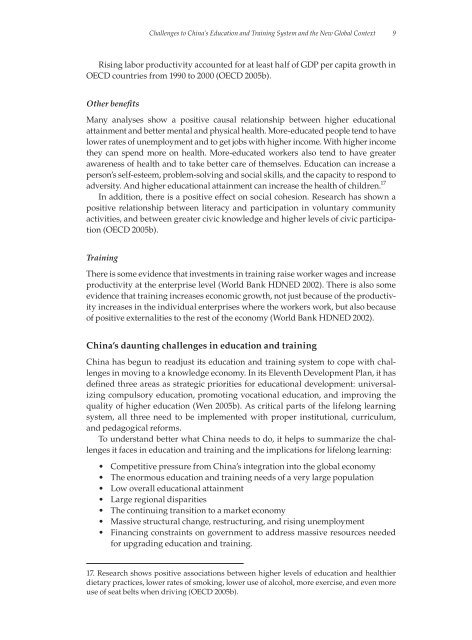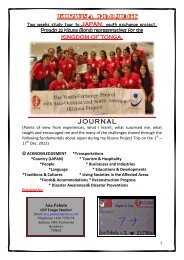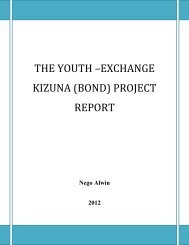Enhancing China's Competitiveness Through Lifelong Learning ...
Enhancing China's Competitiveness Through Lifelong Learning ...
Enhancing China's Competitiveness Through Lifelong Learning ...
You also want an ePaper? Increase the reach of your titles
YUMPU automatically turns print PDFs into web optimized ePapers that Google loves.
Challenges to China’s Education and Training System and the New Global Context 9<br />
Rising labor productivity accounted for at least half of GDP per capita growth in<br />
OECD countries from 1990 to 2000 (OECD 2005b).<br />
Other benefits<br />
Many analyses show a positive causal relationship between higher educational<br />
attainment and better mental and physical health. More-educated people tend to have<br />
lower rates of unemployment and to get jobs with higher income. With higher income<br />
they can spend more on health. More-educated workers also tend to have greater<br />
awareness of health and to take better care of themselves. Education can increase a<br />
person’s self-esteem, problem-solving and social skills, and the capacity to respond to<br />
adversity. And higher educational attainment can increase the health of children. 17<br />
In addition, there is a positive effect on social cohesion. Research has shown a<br />
positive relationship between literacy and participation in voluntary community<br />
activities, and between greater civic knowledge and higher levels of civic participation<br />
(OECD 2005b).<br />
Training<br />
There is some evidence that investments in training raise worker wages and increase<br />
productivity at the enterprise level (World Bank HDNED 2002). There is also some<br />
evidence that training increases economic growth, not just because of the productivity<br />
increases in the individual enterprises where the workers work, but also because<br />
of positive externalities to the rest of the economy (World Bank HDNED 2002).<br />
China’s daunting challenges in education and training<br />
China has begun to readjust its education and training system to cope with challenges<br />
in moving to a knowledge economy. In its Eleventh Development Plan, it has<br />
defined three areas as strategic priorities for educational development: universalizing<br />
compulsory education, promoting vocational education, and improving the<br />
quality of higher education (Wen 2005b). As critical parts of the lifelong learning<br />
system, all three need to be implemented with proper institutional, curriculum,<br />
and pedagogical reforms.<br />
To understand better what China needs to do, it helps to summarize the challenges<br />
it faces in education and training and the implications for lifelong learning:<br />
• Competitive pressure from China’s integration into the global economy<br />
• The enormous education and training needs of a very large population<br />
• Low overall educational attainment<br />
• Large regional disparities<br />
• The continuing transition to a market economy<br />
• Massive structural change, restructuring, and rising unemployment<br />
• Financing constraints on government to address massive resources needed<br />
for upgrading education and training.<br />
17. Research shows positive associations between higher levels of education and healthier<br />
dietary practices, lower rates of smoking, lower use of alcohol, more exercise, and even more<br />
use of seat belts when driving (OECD 2005b).
















